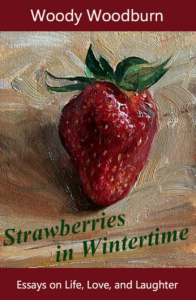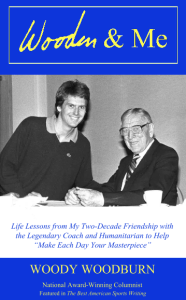 In fifth grade, in springtime, in the afternoon, Mr. Hawkins, one of my all-time favorite teachers, grounded me from recess and instead gave me an assignment as a small punishment for talking in class.
In fifth grade, in springtime, in the afternoon, Mr. Hawkins, one of my all-time favorite teachers, grounded me from recess and instead gave me an assignment as a small punishment for talking in class.
While my classmates raced onto the playground, I was sent outside to the school’s front yard and told to fill a sheet of notebook paper with observations. I returned in about five minutes, bored and with an empty page, begging to go join my friends in kickball.
“Don’t come back until the page is filled,” Mr. Hawkins reprimanded, adding encouragingly as I remember it like yesterday: “Look up in the sky, look at the trees, get down on your hands and knees and really look.”
It may not be memory’s sweet exaggeration to report that I filled up two full pages, even three, with my findings. Certainly, long before reading these words by John Muir I learned their meaning that day: “There are treasures hidden in the glorious wildness like unmined gold.”
Hidden, too, in a schoolyard’s grass, bushes and trees.
This all came flying back to my mind, like a red robin alighting on a dogwood branch, the other day when I spent some time really looking at the drought-resistant wildness of my front yard.
This close examination was further tied to Mr. Hawkins, who doubled as the school’s science teacher. Whenever a spider intruded in our classroom he would capture it beneath an upturned coffee cup, slide a piece of paper below, and then release it outside. He explained that while spiders may seem scary, they benefit our ecosystem by eating insects and pests.
Ever since, except in the middle of the night when I choose the heel of a shoe instead of a cup, I try to catch-and-release spiders as I would a lovely rainbow trout.
This time, when I bent down to liberate the eight-legged guy – or gal – in the front-yard landscape, I sighted a beetle crawling on a decorative boulder. I proceeded to watch it seemingly defy gravity by climbing down the steep face like a rock climber rappelling Half Dome.
Next, my eyes followed the paroled spider as it slowly scaled the long arm of a cactus plant. By now, I was back in the fifth grade, literally back on my hands and knees, filling up a lined notebook page in my mind.
A single file of ants marched across a dry creek bed of smooth stones; a butterfly, black and orange but not a Monarch, flitted by; a bird chirped out of sight and leaves overhead fluttered like nature’s gentle wind chimes; a second butterfly joined the first and they did an aerial ballroom dance together; another bird, a crow I believe, made a short commuter flight from our rooftop to the top of a plum tree.
For a long while I observed a lone worker bee go from flower to flower to flower like a trick-or-treater from door to door. In the midst of this viewing, a stray cat, black as midnight with golden eyes that seemed neon-lit, strolled up beside me as if to ask: “Hey, buddy, have you seen any mice in there anywhere?”
To this I would have thankfully answered “no” for I am too phobic of rodents to rescue and relocate one with a coffee mug.
And so it went, for fifteen minutes or maybe it was 45, I do not know. I do know this, as Mr. Muir also wrote: “In every walk with Nature, one receives far more than he seeks.” Mr. Hawkins would have surely agreed.
* * *
Woody Woodburn writes a weekly column for The Ventura County Star and can be contacted at WoodyWriter@gmail.com. Follow him on Twitter and Instagram at @woodywoodburn. His SIGNED books are available at www.WoodyWoodburn.com.

 Personalized Signed copies of WOODEN & ME: Life Lessons from My Two-Decade Friendship with the Legendary Coach and Humanitarian to Help “Make Each Day Your Masterpiece” and “Strawberries in Wintertime: Essays on Life, Love, and Laughter” are available at WoodyWoodburn.com
Personalized Signed copies of WOODEN & ME: Life Lessons from My Two-Decade Friendship with the Legendary Coach and Humanitarian to Help “Make Each Day Your Masterpiece” and “Strawberries in Wintertime: Essays on Life, Love, and Laughter” are available at WoodyWoodburn.com
